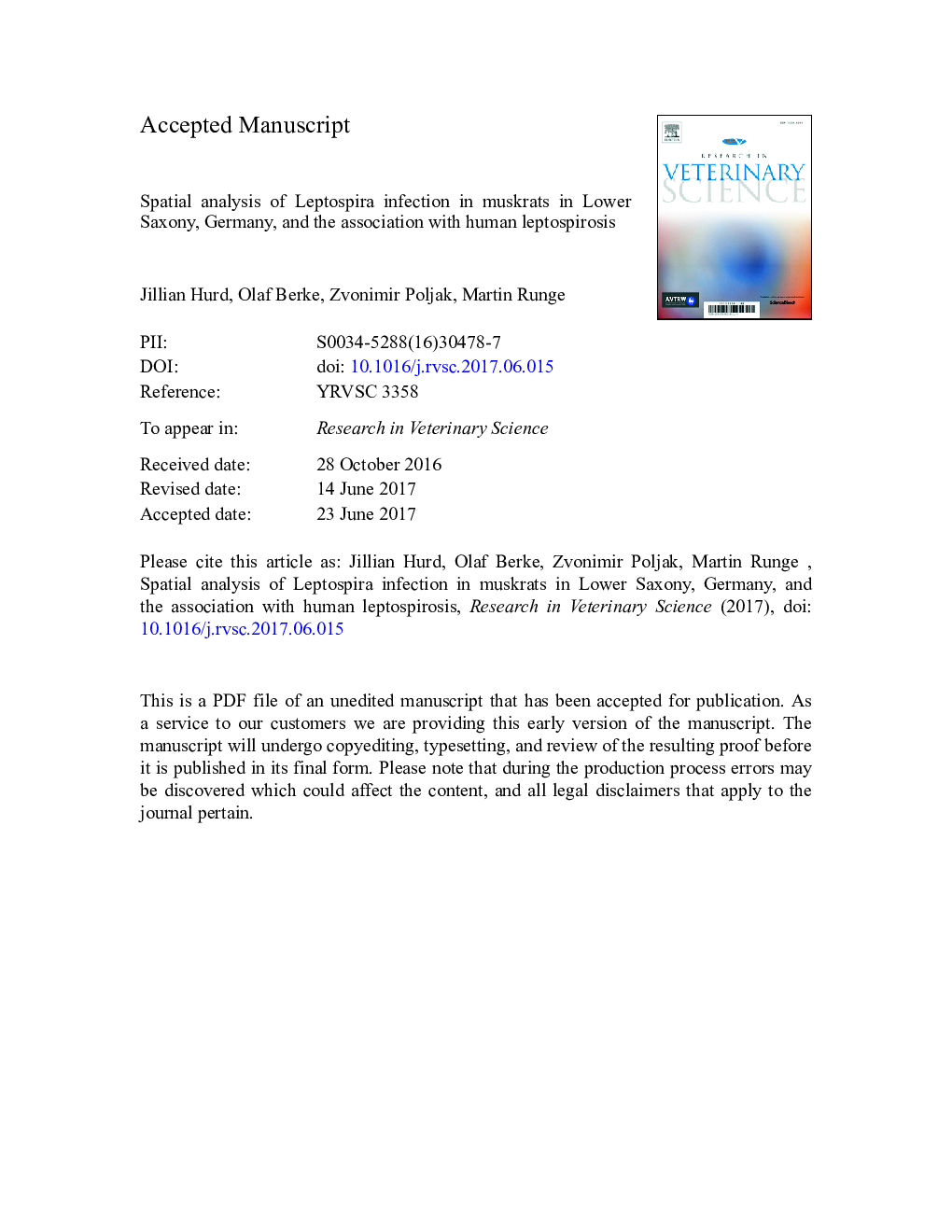| Article ID | Journal | Published Year | Pages | File Type |
|---|---|---|---|---|
| 5543888 | Research in Veterinary Science | 2017 | 21 Pages |
Abstract
Leptospirosis has been reported as an emerging zoonosis and the most widespread zoonotic disease in the world. Muskrats (Ondatra zibethicus) have been known to carry Leptospira serovars, which have been linked to Weil's disease - a serious and life threatening disease in humans. In this study, muskrats were sampled across 43 regions of Lower Saxony, Germany, during 2007 to 2009 and were tested for leptospirosis using Polymerase Chain Reaction (PCR). Circular and flexibly shaped spatial scan tests were applied and detected two leptospirosis clusters in Lower Saxony, Germany. Several predictor variables were investigated using spatial Poisson rate regression analysis; however, only maximum regional temperature was associated with the incidence rate of leptospirosis in muskrats. For every 5 °C increase in temperature, the incidence rate of leptospirosis in muskrats decreased 0.97 times. The association between the smoothed muskrat leptospirosis prevalence and the rate of human leptospirosis was also investigated using a Poisson rate regression model and revealed no relationship. Although no relationship was found at the level investigated in this study, recent human leptospirosis outbreaks have been linked to muskrats, so muskrats as a risk factor for human leptospirosis should not be ruled out. Overall, leptospirosis clusters were found within the muskrat population in Lower Saxony, Germany and temperature was confirmed as a risk factor.
Keywords
Related Topics
Life Sciences
Agricultural and Biological Sciences
Animal Science and Zoology
Authors
Jillian Hurd, Olaf Berke, Zvonimir Poljak, Martin Runge,
